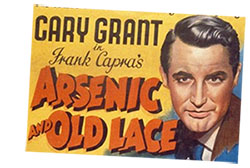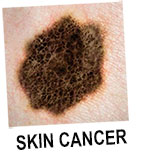
Articles, videos about Tongkat Ali, Black Ginger, and Butea Superba
Tongkat Ali and heavy metals
The possible contamination of Tongkat Ali with heavy metals is a matter of concern for health-conscious consumers who aim for optimal sex as well as a maximum lifespan. To assure that Tongkatali.org's products meet the highest safety-standards, Tongkatali.org has commissioned, for the past 25 years, numerous heavy metals tests at independent scientific labs and university labs.
This is in contrast to what is published by illegitimate sellers. Their certificates are fake, either doctored on the basis of certificates they found on the internet, or entirely written by themselves, with or without a letterhead of what they claim to be their "company" (even when they operate out of a single rented room).
Telltale signs include substandard English, and the absence of a stamp, a date, and a signature of the lab head. Furthermore, genuine labs do not certify what they cannot control, or for what they cannot take responsibility.
An overload of badges and logos of organizations, intended to install confidence, should also make suspicious. Pfizer and Merck do not display any, but the websites of obscure Tongkat Ali traders are plastered with badges.
The four elements typically included in a heavy metal lab examination are: lead (Pb - Plumbum), cadmium (Cd), mercury (Hg - hydrargyrum, quicksilver), and arsenic (As).
Arsenic, of course, is neither heavy, nor a metal, but it is grouped with the other three because of its toxicity.
Heavy metals occur naturally in the environment, but often high levels are anthropogenic (caused by humans).
Like cadmium and mercury (but not arsenic), lead can accumulate in the body over many years. High lead levels in the human body can cause hypertension, heart attack, stroke, kidney disease, and reproductive problems.
Compared to cadmium, mercury, and arsenic, lead has, historically, had the most widespread detrimental effect on human health.
In the 19th and 20th century, lead contamination happened through water pipes and industrial paints.
After World War II, most lead pollution was caused by the use of leaded gasoline. The gasoline was burned, and the lead blown into the air. The lead then landed on crops, and made it into the human food chain.
Compared to 50 years ago, lead is now better managed in North America and Western Europe. "From 1976-1980 to 2015-2016, the geometric mean blood lead level (BLL) of the US population aged 1 to 74 years dropped from 12.8 to 0.82 µg/dL [micrograms per deciliter], a decline of 93.6%." [Source: Control of Lead Sources in the United States, 1970-2017]
Still, the WHO assessed that in 2017, 5.6 percent of worldwide heart attacks and 6.2 percent of worldwide strokes were caused by lead pollution. According to the WHO, lead poisoning in 2017 accounted for 1.06 million death and 24.4 million years of healthy life lost [Source: Lead poisoning and health]
Most deaths by lead bioaccumulation occur in developing countries or countries that developed at breakneck speed, such as China [Source: Lead Poisoning in China: The Hidden Scourge].
Much of the lead (and cadmium) poisoning in the 21st century, especially in Third World countries, can be traced back to coal mining and coal-fired power plants.
An analysis of 100 Malaysian Tongkat Ali products concluded that many contained up to 20.72 ppm of lead [Source: Analysis of lead content in herbal preparations in Malaysia]
The US Food and Drug Administration, FDA, in September 2018, determined maximum daily limits of lead as 12.5 micrograms for adults and 3 micrograms for children. [Source: FDA reduces maximum daily limit for lead in children’s food by half].
The US does not specify maximum daily limits of lead and other heavy metals in food supplements. But do the math: 20 ppm is the same as 20 micrograms per gram. This means that 1 gram of the worst Malaysian Tongkat Ali extract would already by equivalent to almost double the lead contamination set as daily maximum limit for adults by the FDA.
Compared with Tongkatali.org's Indonesian Tongkat Ali products from North Sumatra, Malaysian Tongkat Ali can come with up to 2000 times more heavy metal load. Consumers may not, but Tongkat Ali traders typically are aware of these metrics. For this reason, on platforms like Amazon, almost all Tongkat Ali is sold as "Indonesian" even when it comes from Malaysia, or even worse, from China. Thus, buyers are advised to check or ask for photographic PROOF that a supplier indeed sources Tongkat Ali from Indonesia.
Why is Malaysian Tongkat Ali so contaminated with heavy metals?
Malaysian Tongkat Ali always comes from Sarawak, the Malaysian part of Borneo.
While many people may associate Borneo with images of Orang Utangs in vast rain forests, Borneo is the East Asian Persian Gulf - a shallow geological structure rich in easily accessible fossil fuels.
Both Indonesia and Malaysia dig out the huge coal reserves of Borneo, all accessible by open-pit mining. But on Borneo, only Sarawak has coal-fired power stations, not just one but three (Mukah Power Station, PPLS Power Generation Plant, Sejingkat Power Corporation Plant). Coal is found in Malaysia almost exclusively in Sarawak. [Source: Sarawak holds nearly all of nation’s coal reserves]
Coal only burns to some 80 to 90 percent. The residues (fly ash and bottom ash), released into the air or deposited in makeshift ponds) contain a nasty mix of poisonous elements, including lead, cadmium, mercury, arsenic, and others. As long as the coal deposits are left alone, these poisonous substances are sealed away in the ground, along with huge amounts of carbon dioxide, CO2. This is considered a necessity to make planet earth reasonably habitable for humans. As long as coal deposits are not touched, their environments are healthy. That changes with coal mining and coal-fired power plants. The toxic elements are inevitably released into the air and into underground water, and then make it into the human food chain.
But Tongkatali.org's Tongkat Ali comes from the North of Sumatra Island, thousands of kilometers to the west (see map above). Much electricity in North Sumatra is generated in the form of hydropower (7 stations: Lau Renun Hydro in Silalahi, Sipansihaporas Hydro in Sipansihaporas, Asahan I Hydro in Parmaksian, Asahan III Hydro in Pintu Pohan Meranti, Sigura-gura Hydro in Simorea, Tangga Hydro in Tangga, and Wampu Hydro in Kota Buluh). "The total Hydro Energy Resource Capacity on Sumatra Power System is 7642.2 MW." [Source: Sustainable Energy Production In Sumatra Power System ]
Furthermore, the roots of Tongkat Ali trees used by Tongkatali.org to make 1:200 extract are around 30 years old... an almost pre-industrial era in the mountain ranges of Sumatra. Mountain ranges on Sumatra are still so far from human civilization that what Tongkatali.org's tribal collectors fear most are ... wild tigers. See the following footage on attacks by Sumatran tigers on humans.
Cadmium poisoning is much rarer than lead poisoning, and casualties are counted in the thousands, not by the million. A recent estimate puts the yearly disease load of the most common adverse long-term effect, Chronic Kidney Disease, caused by cadmium , at 2064 global deaths and 70,513 Disability-Adjusted Life Years - DALYs [Source: Global burden of late-stage chronic kidney disease resulting from dietary exposure to cadmium, 2015].
Acute cadmium poisoning causes respiratory disease, long-term exposure damages the kidneys, and heavy long-term bioaccumulation softens bones (osteomalacia).
After many years, ever more residents suffered from cadmium poisoning. The disease was named itai-itai, meaning ouch ouch, for its extraordinary painfulness.
On the other hand, just as with lead, many people around the world are affected by silent detrimental health effects from cadmium that stem from coal-fired powerplants. You can stand on climate change where you fancy, but there is no denying that coal is dirty energy. From the US Environmental Protection Agency: "Coal ash contains contaminants like mercury, cadmium and arsenic. Without proper management, these contaminants can pollute waterways, ground water, drinking water, and the air." [Source: Coal Ash Basics]
Coal ash contains not just cadmium, lead, mercury, and arsenic but also beryllium, boron, chromium, cobalt, manganese, molybdenum, selenium, strontium, thallium, uranium, and vanadium.
All these metals are naturally found in the earth's crust, in rock and soil, but in much lower concentrations than in coal ash, especially fly ash, which makes up a much largest volume of coal ash. Obviously, the concentrations in rock and soil vary from place to place, and so do the concentrations in coal, depending on its origin. But here are some rules of thumb for fly ash and natural, not contaminated soil in the US: Arsenic, fly ash up to 260 mg/kg, soil up to 12 mg/kg, Lead fly ash up to 230 mg/kg, soil up to 30 mg/kg, Cadmium, fly ash up to 3.7 mg/kg, soil up to 0.5 mg/kg, Mercury, fly ash up to 0.51 mg/kg, soil up to 0.19 mg/kg [Source: Coal Ash: Characteristics, Management and Environmental Issues]
As if the above wouldn't be enough, coal ash also harbors some elements with radioactive isotopes (forms of elements with different numbers of neutrons in their nuclei): Uranium, fly ash up to 19 mg/kg, soil up to 3.9 mg/kg Thallium, fly ash up to 45 mg/kg, soil up to 0.70 mg/kg.
As the US Environmental Protection Agency pointed out: "Without proper management, these contaminants can pollute waterways, groundwater, drinking water, and the air." But mind you: In China and the Third World, cost efficiency rules coal ash disposal, not environmental protection.
The most common source of mercury pollution of the environment is small-scale gold mining, followed by coal-fired power plants [Source: Gold rush, mercury legacy: Small-scale mining for gold has produced long-lasting toxic pollution, from 1860s California to modern Peru]
In fairness to all the traders of fake Tongkat Ali, the Western consumer's potential mercury exposure through herbal formulations is minimal overall.
Practically anybody can mercury-poison himself or herself by eating too much of the wrong fish (shark fins, for example). This is from the United States Environmental Protection Agency: "Most human exposure to mercury is from eating fish and shellfish contaminated with methylmercury, both in the United States and worldwide." [Source: How does mercury threaten our health?]
But how does all that methylmercury get into fish in the first place? It's still industrial pollution that is to blame. Inorganic, elemental mercury is released by gold mining, coal-fired power plants, and many other industrial operations and washed into rivers, or falls as rain contaminated by air pollution into oceans. Bacteria in bodies of water of any size convert inorganic, elemental mercury into methylmercury which is then taken up by algae and phytoplankton.
While most human exposure to mercury can easily be avoided by just not eating any fish or shellfish, politicians around the world who need voters, or, in authoritarian regimes, at least non-antagonized subjects, cannot be expected to propagate a message that, because of methylmercury, aquatic life is not fit for human consumption. For both nutrition and an income, the lives of just too many people depend on fish and fishing.
Inorganic (carbon-free) arsenic used to be easily available as the rat poison arsenic trioxide. It is deadly only after a few hours to four days, thus obscuring the cause of death. For organic arsenic compounds, deadly dosages in rodents are around 100 mg/kg body weight (Reference: Health Effects).
Thus, inorganic arsenic is about 200 times more deadly than organic arsenic. For humans, exposure to organic arsenic compounds happen through the consumption of seafood, but typical exposure levels are around 30 times below a lethal dosage. Contrary to what is the case for lead, cadmium, and mercury, arsenic does not accumulate in the body but is easily excreted. Immediate exposure to high quantities, or repeated chronic exposure to lower, non-lethal quantities, is responsible for the detrimental effects on people's health.
Apart from cases of murder, arsenic poisoning often does not have anthropogenic (man-made) causes. The element occurs in the earth's crust, bound in rock, and is washed into water. Geological features determine risk, Bangladesh being the most exposed country. Deep-well water in the Northeast US is also often contaminated.
Arsenic in health supplements is not something to worry about. After contaminated drinking water, the second most common hazard is rice. Rice is grown in flooded fields (paddies). To ensure flooding, paddies are typically irrigated, sometimes with contaminated groundwater. Modern rice varieties also need a lot of fertilizer for optimal yields. Organic fertilizers are very low in arsenic, but cheap chemical fertilizers can have dangerous levels of arsenic. Here a case study: Phosphate fertilizer main source of arsenic in kidney disease in Sri Lanka.
The topic arsenic-contaminated rice made it into the world's foremost scientific journal, Nature (Contamination: The toxic side of rice), but don't expect Asian environmentalists to jump on it anytime soon.
Meanwhile, in the affluent Northwest of the globe, governments have issued warnings against the extensive consumption of rice. Just like for fish: limit to a few servings per week.
References:
Ang, Hooi-Hoon; Lee, Kheng-Leng (2004) Analysis of lead in tongkat Ali hitam herbal preparations in Malaysia. Toxicological & Environmental Chemistry
Volume 87, Issue 4 https://www.tandfonline.com/doi/abs/10.1080/02772240500382589
Arsenic-contaminated water linked to skin cancer in US (2016) Medical Express https://medicalxpress.com/news/2016-07-arsenic-contaminated-linked-skin-cancer.html
Arsenic and Drinking Water USGS https://www.usgs.gov/mission-areas/water-resources/science/arsenic-and-drinking-water?qt-science_center_objects=0#qt-science_center_objects
Arsenic-contaminated water linked to skin cancer in US
Arsenic in rice – is it a cause for concern? (2017) British Nutrition Foundation https://www.nutrition.org.uk/nutritioninthenews/headlines/arsenicinrice.html
Baertlein, Lisa; Humer, Caroline (2012) U.S. needs arsenic limits in rice: Consumer Reports Reuters https://www.reuters.com/article/us-usa-rice-arsenic-idUSBRE88I0RR20120919
Balali-Mood, Mahdi; Naseri, Kobra; Tahergorabi, Zoya; Khazdair, Mohammad Reza; Sadeghi, Mahmood (2021) Toxic Mechanisms of Five Heavy Metals: Mercury, Lead, Chromium, Cadmium, and Arsenic. Frontiers in Pharmacology, https://doi.org/10.3389/fphar.2021.643972
Bernstein, Lenny (2016) Lead poisoning and the fall of Rome. WashingtonPost.com,
https://www.washingtonpost.com/news/to-your-health/wp/2016/02/17/lead-poisoning-and-the-fall-of-rome/
Choong, Meng Yew (2014) Sarawak holds nearly all of nation’s coal reserves. The Star https://www.thestar.com.my/news/nation/2014/11/23/swak-holds-nearly-allof-nations-coal-reserves
D'Alessandro, Nicole (2014) Mercury in Seafood: How Much Is Too Much? EcoWatch https://www.ecowatch.com/mercury-in-seafood-how-much-is-too-much-1881943337.html
Donohue, Joyce Morrissey; Abernathy, Charles O. (1999) Exposure to Inorganic Arsenic from Fish and Shellfish Arsenic Exposure and Health Effects III, Pages 89-98 https://doi.org/10.1016/B978-008043648-7/50012-1
Dignam, Timothy PhD, MPH; Kaufmann, Rachel B. PhD, MPH; LeStourgeon, Lauren MPH; Brown, Mary Jean ScD, RN (2019) Control of Lead Sources in the United States, 1970-2017: Public Health Progress and Current Challenges to Eliminating Lead Exposure. Journal of Public Health Management and Practice, Volume 25 Issue, pages: S13-S22, doi: 10.1097/PHH.0000000000000889
Eimer, David (2012) 20 tons of cadmium poisoning vital Chinese river. The Telegraph
https://www.telegraph.co.uk/news/earth/environment/9053671/20-tons-of-cadmium-poisoning-vital-Chinese-river.html
Flynn, Dan (2020) FDA announces limit on inorganic arsenic in infant rice cereals Food Safety News https://www.foodsafetynews.com/2020/08/fda-announces-limit-on-inorganic-arsenic-in-infant-rice-cereals/
Fowler, Bruce A.; Oskarsson, Agneta (2015) Cadmium Poisoning ScienceDirect
https://www.sciencedirect.com/topics/medicine-and-dentistry/cadmium-poisoning
Gibb, Herman J ; Barchowsky, Aaron; Bellinger, David; Bolger , P Michael; Carrington, Clark; Havelaar, Arie H; Oberoi, Shilpi; Zang, Yu; O'Leary, Keri; Devleesschauwer, Brecht (2019) Estimates of the 2015 global and regional disease burden from four foodborne metals - arsenic, cadmium, lead and methylmercury. National Center for Biotechnology Information
https://linkinghub.elsevier.com/retrieve/pii/S0013935118306959
Jayasumana, Channa; Fonseka, Saranga ; Fernando, Ashvin; Jayalath, Kumudika; Amarasinghe, Mala; Siribaddana, Sisira; Gunatilake, Sarath; Paranagama, Priyani (2015) Phosphate fertilizer is a main source of arsenic in areas affected with chronic kidney disease of unknown etiology in Sri Lanka. Springerplus PMC4348354 10.1186/s40064-015-0868-z
Ives, Mike (2015) Indonesian Coal Mining Boom Is Leaving Trail of Destruction. Yale Environment 360
https://e360.yale.edu/features/indonesian_coal_mining_boom_is_leaving_trail_of_destruction
Kuivenhoven, Matthew; Mason, Kelly (2020) Arsenic Toxicity StatPearls https://www.ncbi.nlm.nih.gov/books/NBK541125/
Learn about Lead, EPA, United States Environmental Protection Agency. https://www.epa.gov/lead/learn-about-lead#effects
Li, Ping; Feng, Xinbin; Qiu, Guangle (2010) Methylmercury Exposure and Health Effects from Rice and Fish Consumption: A Review International. Journal Environ Research Public Health https://www.mdpi.com/1660-4601/7/6/2666
Li, Rui; Wu, Han; Ding, Jing; Fu, Weiman; Gan, Lijun; Li, Yi (2017) Mercury pollution in vegetables, grains and soils from areas surrounding coal-fired power plants. Scientific Reports. Volume 7, Article number: 46545 https://www.nature.com/articles/srep46545/
Mast, Laura (2018) Coal Ash Contains Lead, Arsenic and Mercury and it's mostly unregulatedMassive Sciencehttps://massivesci.com/articles/coal-ash-water-health-hazard/
Meharg, Andy (2014) High levels of cancer-causing arsenic in rice – so why isn’t it regulated in our food? The Conversation https://theconversation.com/high-levels-of-cancer-causing-arsenic-in-rice-so-why-isnt-it-regulated-in-our-food-33691
Mercury Emissions: The Global Context. United States Environmental Protection Agency. https://www.epa.gov/international-cooperation/mercury-emissions-global-context
Montes-Santiago, Julio (2013) Artists and celebrities with possible lead poisoning. ResearchGate.net, https://www.researchgate.net/figure/Artists-and-celebrities-with-possible-lead-poisoning_tbl2_256664255
Montes-Santiago, Julio (2013) The lead-poisoned genius: saturnism in famous artists across five centuries. National Library of Medicine, https://pubmed.ncbi.nlm.nih.gov/24041283/
More than 10 per cent of Chinese rice tainted with cadmium (2011) AsiaNews.it
http://www.asianews.it/news-en/More-than-10-per-cent-of-Chinese-rice-tainted-with-cadmium-20790.html
Neltner, Tom J.D.; Maffini, Maricel Ph.D. (2018) FDA reduces maximum daily limit for lead in children's food by half. Environmental Defence Fund http://blogs.edf.org/health/2018/10/25/fda-reduces-limit-lead-childrens-food/
Newsroom (2019) Lead poisoning and health. World Health Organization,
https://www.who.int/news-room/fact-sheets/detail/lead-poisoning-and-health
Sohn, Emily (2014) Contamination: The toxic side of rice Nature Vol 514, pages S62–S63 https://doi.org/10.1038/514S62a
Staff Writer (2020) How Much Arsenic Does It Take to Kill a Human? Reference https://www.reference.com/science/much-arsenic-kill-human-3951a3cc792bb830
Wikipedia.org, Mercury in fish. https://en.wikipedia.org/wiki/Mercury_in_fish
Wikipedia.org, Minamata disease.https://en.wikipedia.org/wiki/Minamata_disease
Xinhua (2012) Expert says Guangxi water pollution no threat to Hong Kong, Macao. ShanghaiDaily.com https://archive.shine.cn/nation/Expert-says-Guangxi-water-pollution-no-threat-to-Hong-Kong-Macao/shdaily.shtml
Yapici, Gulcin; Can, Gunay; Kiziler, Ali Riza; Aydemir, Birsen; Hakki Timur, Ismail; Kaypmaz, Ayse (2006) Lead and cadmium exposure in children living around a coal-mining area in Yatagan, Turkey. Toxicology and Industrial Health https://journals.sagepub.com/doi/10.1177/0748233706071740
Zanga, Yu; Devleesschauwerb, Brecht; Bolgerd, P. Michael; Goodmane, Emily; Gibb, Herman J. (2015) Global burden of late-stage chronic kidney disease resulting from dietaryexposure to cadmium. Environmental Research http://www.cbra.be/publications/zang2019.pdf
By tongkatali.org
tongkataliorg3@gmail.com
Updated December 19, 2022

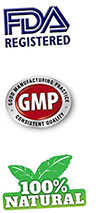
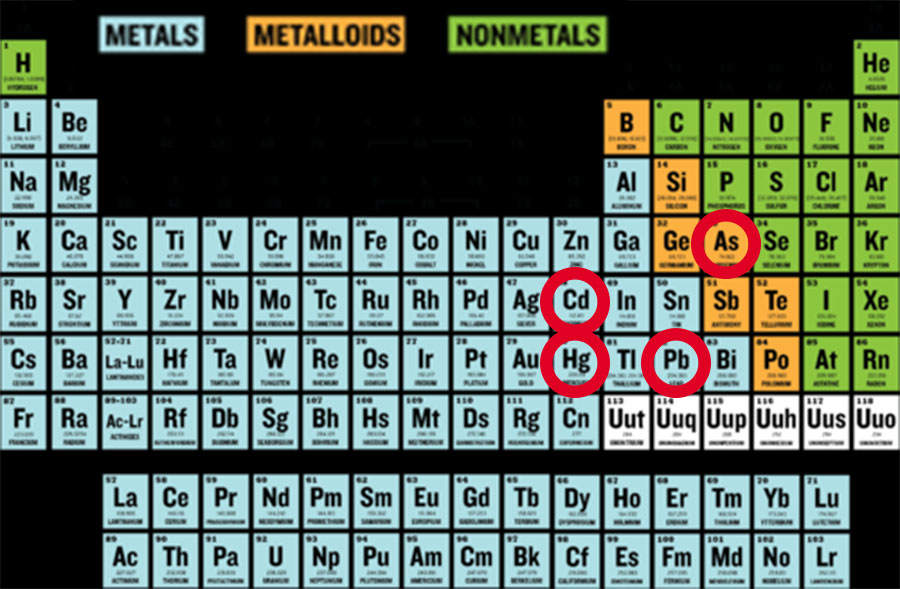
Lead


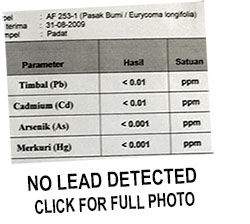
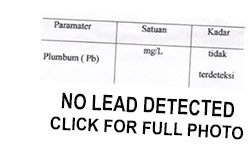

Cadmium
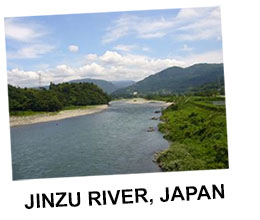
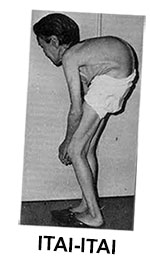
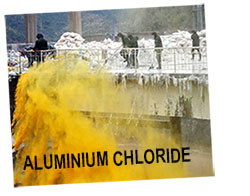
Mercury
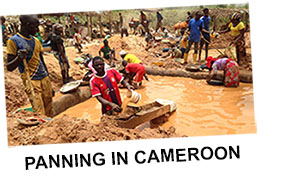
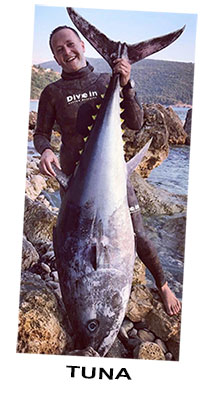
Arsenic

